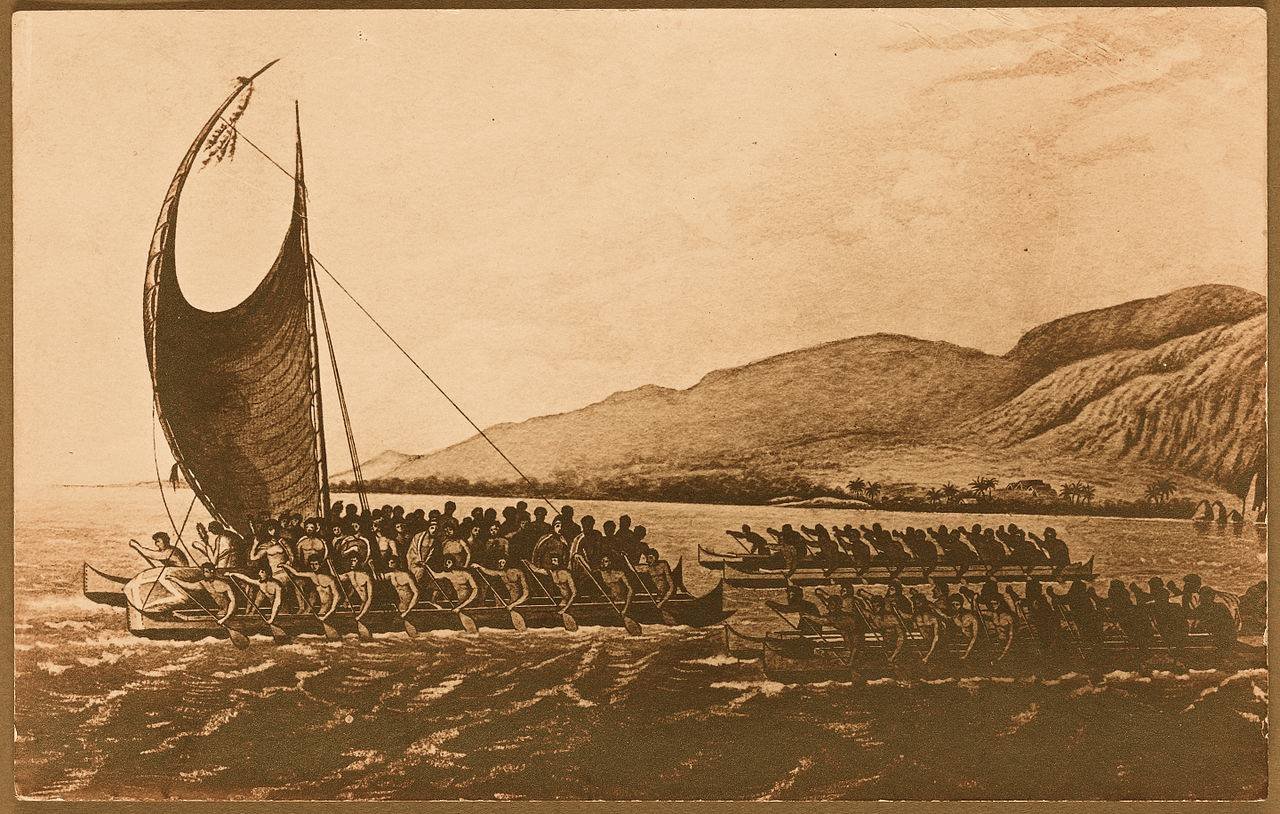CONSPIRACY REPORT
CONSPIRACY REPORT
Contents
The World
History Books Turn a Page.
The Ancients
and their Sinful Ways.
The case for Diffusionism.
Megalithic Sites of the Past
Buried and flooded.
Founding for the Orion Correlation Theory.
mix(ed)TAPE-twenty(xx)SIX(26)
Summer heat dries global riverbeds, now we fear excessive energy prices to battle a cold Winter.
Globe /
Queen Elizabeth II passes, Shinzo Abe was killed, and Mikhael Gorbachev died.
Drought strikes East, West, North and Western U.S., while monsoons flood the South East. Climate regulations on key farming practices result in European protests, and the wealthy buy up farmland. Threat levels between China and Taiwan (U.S. backed) are at ultimate heights, with all eyes remaining on nuclear threats between Russia and Ukraine.
DeepMind AI predicts shape of 200M proteins in the known universe. The neural network of the human brain appears to be a mirror astronomical universe, James Webb Space Telescope (JWST) readings on transit spectroscopy reveal potential threat absorbing energy source in the galaxy.
Europe /
Dutch Farmers revolt against fertilizer limits with manure protests, soaring energy prices draw outrage across nations. Boris Johnson resigns and Liz Truss steps up to lead with excessive tax cuts for the wealthy, Mario Draghi resigns with Giorgia Meloni elected with a Right agenda. The Pope recalls all foreign funds into the Vatican Bank. Nord Stream II pipeline is punctured and can no longer service Russian Oil and Gas to Germany.
Asia /
India’s GDP growth hits 13.5% in Q2 to become world’s 5th largest economy. The Shanghai Cooperation Organisation (SCO) met in Uzbekistan and India based media suspect Xi Jinping was placed under house arrest with Li Qiaoming taking over leadership of the People’s Liberation Army (PLA). China’s Belt and Road initiatives reveal debtor nations, like Pakistan and Venezuela, cannot pay back loans. Real Estate threat in China results in cuts interest rates with hope to spur growth. Russian inflation steadies at 15%, although GDP slowly declines all due to aggressive sanctions with only Oil & Gas and Fertilizer propping up exports. Russia and China build military ties and develop new reserve currency.
North America /
Biden declares the “Pandemic is Over”, U.S. passes bill to ban Assault Weapons, U.S. drone strike kills Al-Zawahri in Kabul. Senate struggle to pass bill for veteran healthcare PACT Act, the FBI raid Trump’s home in Mar-a-Lago searching for classified documents. Dr. Fauci prepares to step down as head of NAID in December
Africa and Middle East /
The two-year war in Tigray lingers on with no end in sight. Saudi Arabia futuristic city project ‘The Line’ presents their 2030 plans, Lebanese banks freezes assets and face physical robberies. Iran faces protests against police brutal treatment of women charge for immodest clothing.
It is strongly debated, yet at the same time accepted, that modern humans (homo sapiens) appeared some 200,000 years ago branching off the homo-family evolutionary path and sharing all the features with someone born today. If true, there is a legacy of 196,000 years of human history, give or take, that we have yet to fully recognize or understand.
If the 20th century is a reference of humanity’s abilities, where two brothers take flight at Kitty Hawk, NC leading towards a nation coordinating a Moon Landing mission 65 years later, there is a lot of space for the imagination to fill in some really big blanks in our overall history.
The accepted view of our ancestors is that they arose in the Cradle of Humankind in Africa. The changing environment resulted in biological developments like bipedalism to limit exposure to the sun, and group communications spurred our larger brain capacity. With a nomadic nature, we migrated north into Europe then east to Asia and eventually through a land bridge over to the Americas. Surviving and thriving across the planet, individual societies developed and flourished throughout. Interesting enough, the story mirrors itself with the Cradle of Civilization also appearing first in Africa, with Mesopotamia being the home for modern society with a city infrastructure that spread throughout the globe.
The history of our people has long been lost to destruction and erosion, with the remnants of stone structures, fossilized bones and oral traditions holding the fragments together. Long lost are the names of our forebearers who first dared to tame fire, who learned how to reset our bones and delivery breached babies, who toiled the earth to cultivate crops to feed villages, who uncovered the mysteries of mathematics to build generational structures. We will never learn about the original communities that first told stories of the creator, defined laws to settle civil suits and complex ethical debates and who died on battlefields to protect the rights of their grandchildren.
The story becomes clearer around 12,000 B.C.E. with artifacts popping up throughout the globe, left behind by sophisticated civilizations with advanced tools. Throughout Africa, Europe, Mesoamerica, and Asia societies rise up and structures designed to mimic natural mountains and dunes get built. The claim is that these societies remained separated yet through coincidence and convergence advanced at a similar pace. However, new theories have proposed that there was a long-lost global civilization with nautical advancements, even aerospace vehicles, that influenced past societies and even some traditions (like the Zodiac) lasting even up to today.
Despite the various theories, all we can do is theorize. We can try to piece together what has been left behind and let these artifacts reveal their stories to us, without trying to impart too much of our modern lens in corrupting what we are looking at. One major consideration in viewing the past from the future is to remove the presumption that our ancestors were not as sophisticated nor technologically aware as we are today. If we are not careful, the brutish stereotypes we apply to cavepeople will limit our understanding and true connection of the beauty, majesty, and values our ancestors can teach us through the past.
There is a vested interest that aligns with today’s worldview that we always progress forward, despite the proven history of set-backs and lost knowledge, we have blind trust that today is the most advanced time period in human civilization and with that perspective we may miss signs from what has been left behind.
The Giants and the Sinful Ways
Modern Osteologists note Homo Sapiens have roughly remained the between 5’to 7’ since time, and our Denisovan and Neanderthals cousins averaged around 5’5”. Although there are one-off exceptions of tall people, like Robert Wadlow who pushed 8’ 11” before his youthful death, on average we remained the same heights throughout millennia. This makes consistent historical references to a society of Giants all that more intriguing and poses questions if these are myth or true history of a civilization now lost to time. If to be believed, it appears that the Giants aped the decline of the megafauna of the Pleistocene era as humans moved in, and the mammoth men effectively became extinct out around the times of the Great Flood.
In Ancient Sumer, the trail from mythology to history begins in the Tummal Chronicle as the lineage of the ruler Enmebaragesi, the great-great grandfather of Gilgamesh. The mytho-history is captured on clay tablets in a poetic form as the Epic of Gilgamesh, accounts of the adventures of the 11 cubits (17 feet tall) demigod and his wild friend, Enkidu who challenged the Gods and Mortality. Although the second oldest religious text, after the Pyramid Texts of Egypt, modern culture only rediscovered the text in Library of Ashurbanipal in 1849 and it was quick to note the similarities and influence these stories had on the Hebrew Bible, Iliad, and the Odyssey.
The oral traditions were collected and written in Akkadian as a poem by the scribe Sîn-lēqi-unninni around 1,600 B.C.E. The Mesopotamian King of Uruk was known to be a real bastard, to the point where his unruly behaviour drew attention of the Anunnaki, where God Anu creates Enkidu from clay to focus Gilgamesh’s attention outwardly to adventure. The Sumerian stories of the Children of Anak are the most complete telling of the Giants who handed over the reins of civilization to humans. However, throughout time the Giants became synonymous of evil and devilish behaviour.
“The giants, therefore, are not to be identified with the Mesopotamian warrior-kings, but their behaviour rather indicates that they actually are violent and evil demons”
In Ancient Greece, the bones of mastodons, and wooly rhinoceros helped inform some of the myths of the Giants of the past. Particularly, the wooly mammoths’ skulls and its bridge of the trunk were thought to be evidence of the Giant cyclops with one massive ocular cavity. The Gigantomachy refers to the war between the Gods led by Zeus and the Titans (Giants) led by Kronos.
The Titans are said to be the offspring of Uranus (The Sky) and Gaia (The Earth), and the cruelty of their father kept them trapped within their mother’s womb until she could lean on her son, Kronos, to castrate Uranus to overthrow him, and free his siblings. As Kronos grew strong himself, so did his cruelty. In fear of being usurped, he would eat all of his sons to prevent his own inevitable destruction. His sister-wife Rhea, hid their son Zeus in Crete and eventually lived as a servant to Kronos, until the time struck, and he gathered the Olympian Gods (Hestia, Demeter, Hera, Hades, and Poseidon) battled for the control of the universe.
The Book of Giants is an apocryphal Jewish book that is an antediluvian (pre-flood) story to explain how wickedness spread after Genesis and even supports Yahweh’s basis for the flood. The Giants (as referenced as Nephilim, Gibborim, or Rephaim) were sons of the Watchers (the Grigori) who slept with human women and have been described in Book of Enoch, as Bastard Demons, who worked against God. Enoch (aka Metatron, aka Utnapistim, aka Father of Methuselah) also a Giant has a telling story and due to his closeness with God was barely able to avoid the temptations by Evil.
The role Giants play in early stories may reveal a past civilization that moderns humans may have battled with, yet lost a firm connection with today. Although the lack of evidence to support their physical size, our myths may reveal a real people with grand knowledge and important presence that they were built into legend and exaggerated cubits.
Atlantis (Ἀτλαντὶς νῆσος)
the "island of Atlas"
In 360 B.C.E. Plato introduces his audience to the idea of Atlantis through the dialogues; Timaeus and Critias. Over time a long debate arose of whether he is describing a real place in history or a metaphorical island state as a counterpoint to his perfect society set out in the Republic.
As the story goes Atlantis and its 9,600-year-old legacy, stems from the Athenian law-maker Solon who attributes the story to teachings from his time with priests in Sais, Egypt. When the priest ‘Sonchis’* states “there is no old opinion handed down among you by ancient tradition, nor any science which is hoary with age. And I will tell you why. There have been, and will be again, many destructions of mankind arising out of many causes”. He is challenging Solon and Hellenic Greeks depth of knowledge, as they have lost access to history and information long before them.
Despite its power as a parable of respect for the long-lost past of humankind, it is also a warning of destiny for future societies to be weary of their own destruction. Plato’s accounts have provoked our imaginations about a lost people and has driven a search for its location to connect us with a history long lost to time.
The myth follows that Poseidon gifted the island to his favorite son Atlas to rule as king, with his many twinned brothers who were given fiefdoms. The island was reported to be the size of Libya (or 3000 by 2000 stadia = 550km by 370km). As the Atlanteans grew strong they took to wage war with Europe and Asia. The campaign started at the Pillars of Hercules (the Strait of Gibraltar) all the way through to Egypt and Tyrrhenia. Their war-like posturing and corrupt politics drew ire from the Gods and in turn the island was lost to the sea by the impacts of a large Earthquake.
Many historian treasure-hunters have tried to find the real Atlantis with leading theories pointing to Greek island of Santorini (ancient Thera) destroyed by a volcanic eruption in 1,600 B.C.E., other presume it could be Antarctica, or even Malta.
A strong case is championed by Randall Carlson that the Azores’ plateau, where the Portuguese Islands reside in the Atlantic, is the home of Atlantis. During the Younger Dryas period, there was massive flooding likely due to large comet impact in northern hemisphere and melting of large glaciers. The flooding and change in weight of the land had a dramatic impact of the tectonic plates. The Azores culminate where 3 tectonic plates align, and reveal geological evidence that core part now underwater were above sea level 10,000 B.C.E.
The myths of Atlantis have inspired Sir Thomas More and Sir Francis Bacon to leverage its literary standing as the basis for foundational principles to discuss Utopia. Whereas other theorists are bent on linking the myths to describe the historical Mayan civilizations, or even a lost island in the Atlantic, destroyed in the Great Flood.
The modern impact of the story of Atlantis is levelled up by a U.S. Congressman Ignatious L. Donnelly’s 1882 work “Atlantis: The Antidiluvian World” which informs a ‘diffusionism’ theory that the Atlanteans were an advanced people responsible for populating and civilizing much of Europe, Africa and the Americas long, long ago. Others like mystic Madame Blavtsky and psychic Edgar Cayce have built on this theory in the 20th century, as well as more recent journalistic investigations by Graham Hancock.
*’Sonchis’ a name given later by Plutarch

The Pyramids
Founding for the Orion Correlation Theory.
Outside a Geometry class, the word ‘Pyramid’ for most, will immediately draw connections to Egypt. Although not unique to Egypt, the Pyramids in Giza Necropolis remain the last of the 7th Wonder of the Ancient World and capture global attention even today. Beyond their physical impressiveness, the Pyramids also challenge us with mysteries of their original intention and if they have a larger connection to other sites on the planet we cannot see with the eye.
During the Dynastic Period, 2,950 B.C.E, in Saqqara ‘mastabas’ (royal tombs) appear and inspire architect Imhotep for Pharoah Djoser to craft the first of the known Pyramids. The tradition reaches its pinnacle with the Pyramid of Giza, built for the Pharaoh Khufu in 2,589 B.C.E.
As European campaigns of 1800’s resulted in antiquities being brought to their home countries, studies in Egyptology rose up in the monarchial societies. The Pyramids were glamourized as honourary tombs and legacy for their King and Queens. However, over time, theorists have come forward to challenge these ideas and built larger narratives behind these impressive buildings.
In 1989, Robert Bauvel’s Orion Correlation Theory notes the lay-out of the Pyramids of Giza mirror the constellation Orion as a corollary on Earth. The theory proposes the Sphinx is a connection to the constellation Leo, however, the alignment with Orion’s belt would pre-date the construction from 2,500 BCE and place the creation of the Sphinx (with a Lion’s Head) to 10,500 BCE.
The theory has been extended beyond the Pyramid, through out to globe to structures and sites marking 17 key locations creating a Great Circle that circumnavigates the globe with eerily accurate precision, that some suspect may be an old Equator.
In Cambodia, Angkor Wat thought to be built 1,000-1,200 A.D. yet the complex maps 3 stars of Corona Bornealis and constellation Draco, which would date construction to 10,500 BCE. The location is 72 degrees of longitude east of the Pyramids of Giza.
In Peru, The Nazca Lines large scale designs thought to be built in 2,000 B.C.E present various animals and figures so large they are best viewed from a vantage point in the sky.
In Peru, Machu Picchu thought to be built by the Incas in 1,500 A.D. but may have ties to a long-lost ancient past.
In Chile, Rapa Nui (Easter Island), the most remote island on Earth, there are remnants of 1,000 maoi, 30 ft. tall monolith statues weighing 80 ton, that perplex modern society.
In Pakistan, lay Mohenjo-daro one of world’s oldest cities located in the Indus Valley, a relic of the Harrapan civilization in 2,500 BCE, with many questions about who lived there and why they left in short time span.
In Iraq, lay the remnants of Ur, the Sumerian city established in 3,800 B.C.E. and city Abraham left before settling in Canaan.
In Jordon, Petra the ancient ‘Rose city’ that was carved into desert cliffs and home to 20,000 Nabateans a part of a global trade route 2,000 years ago.
In Iran, Persepolis an ancient complex complete with 5 palaces used seasonally in 515 B.C.E for unknown rituals.
The theory was expounded upon by journalist Graham Hancock, in 1995’s Fingerprints of the Gods and later works he partnered with Bauvel. In his 12 Non-fiction works, he has followed the threads of ancient civilization throughout the planet.
His core theories is that a cataclysmic event brought on by fragments of a comets dramatically impacting 10,800 B.C.E the megafauna and flora – also the way of life of our human ancestry. His research to him to the underwater Yonaguni Monument in Japan, cities lost in the jungles of the Amazon, and ultimately drawing up convincing evidence there was a vibrant set of societies pre-10,000 b.c.e and drawing connections these societies trade and shared cultures – potentially a foundational culture that underpins Mesopotamia and core values even found today.
Antarctica
and a hidden history
Antarctica (‘opposite to the north’) is a continent, twice the size of Australia, in the Southern Ocean with an average temp. of minus 50’. Interestingly 70% of the worlds fresh water is there, and if melted the oceans will rise 200 feet. Modern society became aware of the continent in 1820 as Russian expeditions passed by, and throughout the 19th century Sealers and Whaling ships moved throughout the Southern Ocean. The 20th century British Expeditions of Robert Falcon Scott and Ernest Shackleton’s Nimrod Expedition developed a firm understanding of the vastness and polar desert conditions of the continent.
In the 1940’s the United States sent military ships to train in the harsh conditions, culminating in a large scale 8 month Operation Highjump led by Admiral Byrd on his fourth excursion to the continent. In 1948 it was recommended the continent fall under guardianship of the United Nations due to its military strategic importance. As recognized by the National Socialist Party (Nazi’s) in 1939 and there is an effort to carve out a piece of the continent they called New Swabia. In 1959, the Antarctic Treaty System (ATS) addressed international regulations on the continent, limiting arms placement and geographical positioning.
Despite its later discovery to the modern world, accounts of the continent date back to Aristotle’s Meterology in 350 B.C.E, and particularly the Ottoman Admiral Piri Reis map (Piri Ibn Haji Mehmed, nephew of Kemal Resi) from 1513 which had the continent detailed accurately, based on 14 charts and 6 mappe mundi from various contemporary and historical maps. It is still questionable if the Piri Reis map is just a description of South America, but other interesting features on the Piri Reis map depict long lost nautical knowledge specifically Bimini Road, or Wall, which is an underwater rock formation off the Bahamas Islands. The features may reveal nautical maps of the ancients, of times with the road 18ft below sea level, and ideas Antarctica may have been a base granting greater access to the rest of the globe.
The oral history from Polynesian societies references the continent as a base point to circumnavigate the world with a key position. And with geographical features covered under an ice sheet, many ponder was this once an important location for humanity. What lies underneath and could there be megalithic sites, even gigantic 2 km pyramids dwarfing those in Giza as a location to hold keys to a lost civilization – a large piece to a post globalist society.
No matter what the case, it is always exciting to recognize there is a lot about what we don’t know and so much more to discover, especially about the past.
Tunes of Late
1. – Wohladaj so – Lenny Fuck ft. Knytl (Matthias Hofmann)
2. – SuperPop! – DJ RE:Code ft. Fraxiom and RYLO (Whole New World)
3. – Doja – Central Cee (self-released)

spiritual
SPIRAL RITUAL
spiritual








































